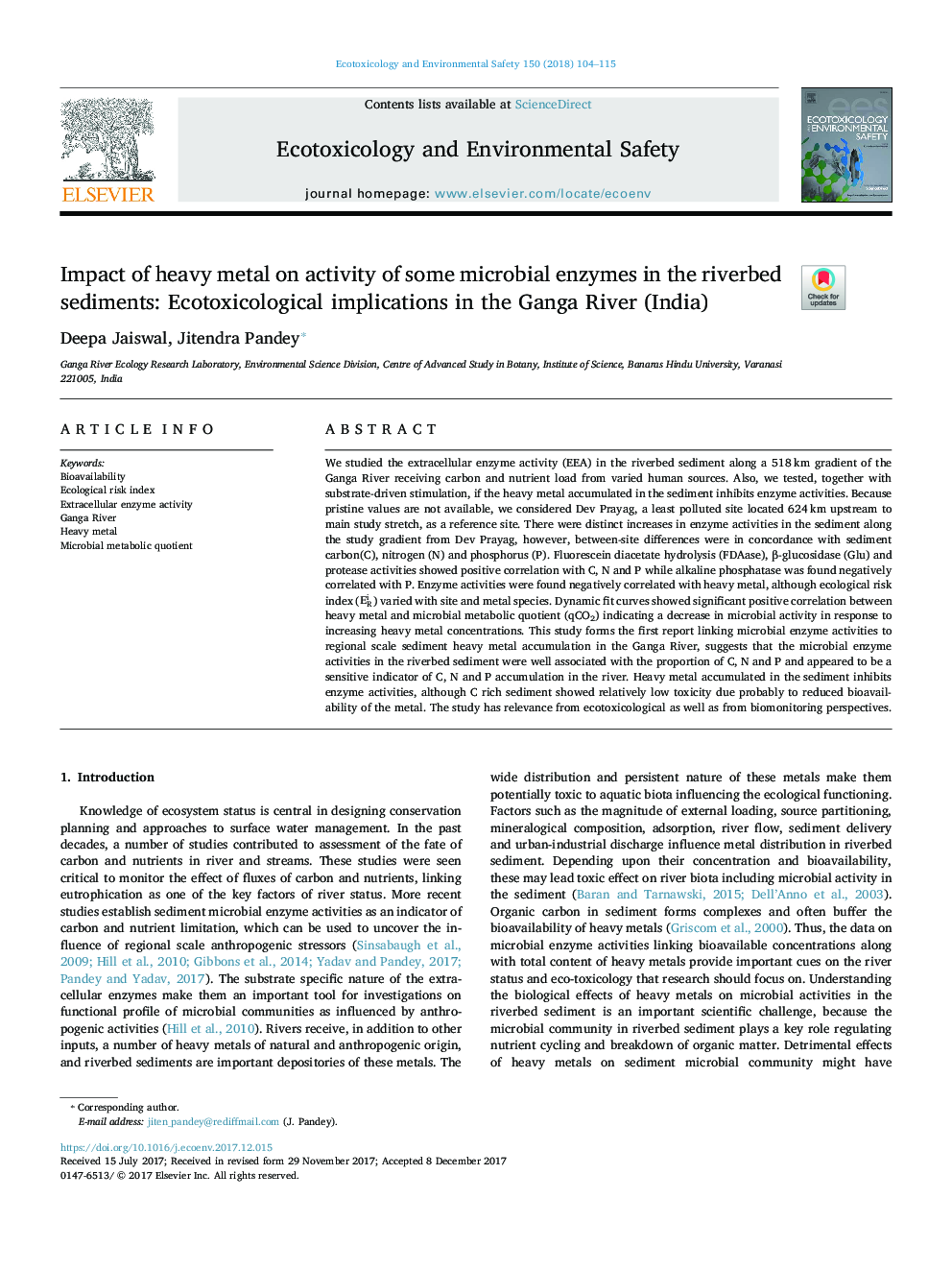| کد مقاله | کد نشریه | سال انتشار | مقاله انگلیسی | نسخه تمام متن |
|---|---|---|---|---|
| 8854361 | 1618914 | 2018 | 12 صفحه PDF | دانلود رایگان |
عنوان انگلیسی مقاله ISI
Impact of heavy metal on activity of some microbial enzymes in the riverbed sediments: Ecotoxicological implications in the Ganga River (India)
ترجمه فارسی عنوان
تأثیر فلزات سنگین بر فعالیت برخی از آنزیم های میکروبی در رسوبات رودخانه: پیامدهای اکولوژیکی سمی در رودخانه گنگا (هند)
دانلود مقاله + سفارش ترجمه
دانلود مقاله ISI انگلیسی
رایگان برای ایرانیان
کلمات کلیدی
قابلیت دسترسی بیولوژیک، شاخص خطر زیست محیطی، فعالیت آنزیمی خارج سلولی، رودخانه گنگا، فلز سنگین نسبت متابولیک میکروبی،
موضوعات مرتبط
علوم زیستی و بیوفناوری
علوم محیط زیست
شیمی زیست محیطی
چکیده انگلیسی
We studied the extracellular enzyme activity (EEA) in the riverbed sediment along a 518 km gradient of the Ganga River receiving carbon and nutrient load from varied human sources. Also, we tested, together with substrate-driven stimulation, if the heavy metal accumulated in the sediment inhibits enzyme activities. Because pristine values are not available, we considered Dev Prayag, a least polluted site located 624 km upstream to main study stretch, as a reference site. There were distinct increases in enzyme activities in the sediment along the study gradient from Dev Prayag, however, between-site differences were in concordance with sediment carbon(C), nitrogen (N) and phosphorus (P). Fluorescein diacetate hydrolysis (FDAase), β-glucosidase (Glu) and protease activities showed positive correlation with C, N and P while alkaline phosphatase was found negatively correlated with P. Enzyme activities were found negatively correlated with heavy metal, although ecological risk index (ERi) varied with site and metal species. Dynamic fit curves showed significant positive correlation between heavy metal and microbial metabolic quotient (qCO2) indicating a decrease in microbial activity in response to increasing heavy metal concentrations. This study forms the first report linking microbial enzyme activities to regional scale sediment heavy metal accumulation in the Ganga River, suggests that the microbial enzyme activities in the riverbed sediment were well associated with the proportion of C, N and P and appeared to be a sensitive indicator of C, N and P accumulation in the river. Heavy metal accumulated in the sediment inhibits enzyme activities, although C rich sediment showed relatively low toxicity due probably to reduced bioavailability of the metal. The study has relevance from ecotoxicological as well as from biomonitoring perspectives.
ناشر
Database: Elsevier - ScienceDirect (ساینس دایرکت)
Journal: Ecotoxicology and Environmental Safety - Volume 150, 15 April 2018, Pages 104-115
Journal: Ecotoxicology and Environmental Safety - Volume 150, 15 April 2018, Pages 104-115
نویسندگان
Deepa Jaiswal, Jitendra Pandey,
